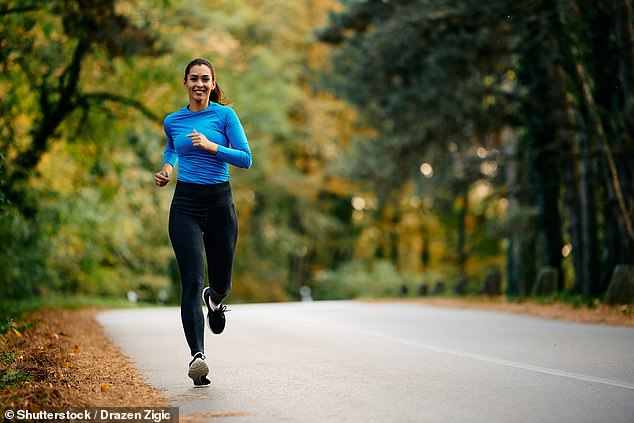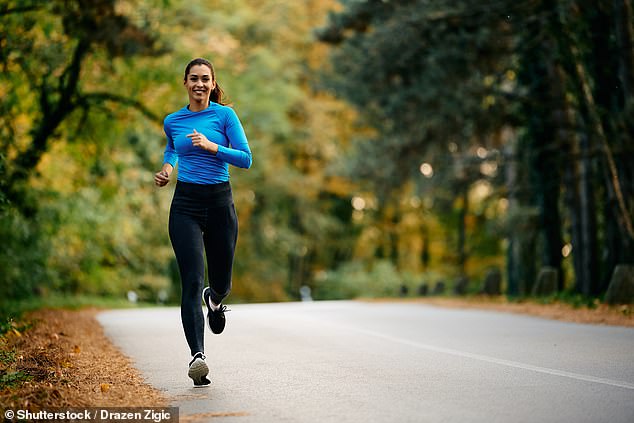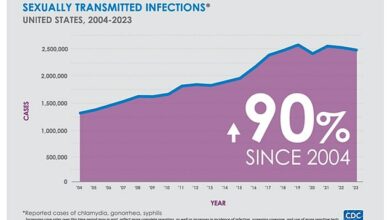Why Slow Running May Be Better for Your Heart — and Protect You from Colds





Slow and steady wins the race, the old saying goes – and now that seems to apply to the health benefits of exercise.
In fact, there’s growing evidence that regular, slow running can strengthen your heart, reduce your risk of type 2 diabetes, and support your immune system and overall fitness much better than running at full speed.
The same goes for other cardiovascular exercises that are done at a slower pace, such as swimming, rowing and cycling. There are even running clubs being formed these days that are just for plodders and joggers.
“Slow running is becoming increasingly popular among recreational athletes,” says Dan Gordon, senior lecturer in cardiorespiratory exercise physiology at Anglia Ruskin University.
‘Over the past decade, we’ve become incredibly enamored with high-intensity interval training (HIIT). I don’t deny the potential benefits of HIIT, but there is a downside: it’s challenging and therefore difficult to get started with if you’re not very fit.’

There is growing evidence that regular, slow running can strengthen your heart. (Stock photo)

Professor Gordon says: ‘If we have a sedentary lifestyle we are susceptible to disease.’ (Stock photo)
That means a high dropout rate, he says, while people are less likely to give up on slower, less strenuous exercises.
There are also “proven physiological benefits of running at this exertion level,” he says.
These were demonstrated in a Danish study published in 2015, in which 5,000 people were monitored for 12 years. They were in
four groups: non-joggers (sedentary) and light, moderate or intensive joggers.
The slow and moderately fast runners had the lowest death rates from any cause, while the death rates of the intense runners were comparable to those of the sedentary group.
One theory is that this is because slow running lowers resting blood pressure and strengthens the heart.
Professor Gordon explains: ‘Basically it improves efficiency by making the heart muscle grow. If you have a bigger heart muscle it can squeeze harder. It also increases the size of the chambers in the heart so it can hold more blood per pump.’
Slow running also improves endurance, as you can run at a slower pace for longer. This increases the production of red blood cells, which in turn means the blood can carry more oxygen.
These adaptations in the heart muscle are not increased by higher-intensity training. Another benefit of slow cardio—also known as “zone 2” cardio, when you work at 60 to 70 percent of your maximum heart rate—is that the body uses stored fat for fuel, says Dr. Lindsy Kass, an exercise physiologist at the University of Hertfordshire, rather than carbohydrates, as it does with higher-intensity training.
Digesting fat is more efficient and better for overall health, adds Professor Gordon: ‘It’s associated with better blood sugar levels and a lower risk of type 2 diabetes.
‘Research has shown that gains in VO2max [oxygen capacity] and race-day speed is about 1 percent better for athletes who incorporate more slow running into their training program.’

According to experts, it’s not about speed, but how intense the effort feels. (Stock photo)

Some studies show that the lengthening ‘eccentric’ phase of a lift takes twice as long. (Stock photo)
That’s a major competitive advantage. Knowing that, it’s no surprise that most top athletes spend as much as 80 percent of their training in zone 2.
“I’ve worked with British rowers, and even though their races are about six minutes long, they row slowly for an hour and a half three times a week,” Dr. Kass says. “The first year they trained like that was the year they started winning all the medals.”
Another reason why top athletes train at a lower intensity is to reduce the stress on their bodies and thus prevent infections and injuries.
Professor Gordon says: ‘If we are sedentary we are quite susceptible to disease. But if we do moderate intensity exercise we develop a better immune response and reduce our susceptibility to disease.
‘But when we start doing more intense exercises, we need much more time to recover [as much as 48 to 72 hours afterwards]and during that recovery period, you become immunocompromised. So the more intense exercise you do, especially if you don’t take enough recovery time between sessions, the more likely you are to get sick and get an infection — and to injure yourself.’
So what do we mean by slow running? Experts say it’s not about speed, but how intense the effort feels. ‘Try singing to yourself as you jog, and if you can do it without gasping for breath, you’ve got it right,’ advises Professor Gordon.
The same philosophy applies to resistance training with weights.
Moving slower takes away the momentum from a movement, which promotes good form and reduces the risk of injury.
Some research shows that muscle growth can be improved by waiting twice as long on the lengthening “eccentric” phase of a lift (for example, landing after a pull-up) than on the shortening “concentric” phase (the pull-up portion).
But don’t go too slowly – you’ll tire more quickly and won’t be able to lift as heavy weights as you should to optimally strengthen your muscles, says Dr Richard Blagrove, senior lecturer in physiology at Loughborough University.
He adds: ‘The majority of people would be better off with a ‘controlled’ [not super slow] eccentric phase and an explosive [as fast as possible] concentric phase with moderate to heavy weights for the majority of their strength training, with some exercises aimed at developing power.’




